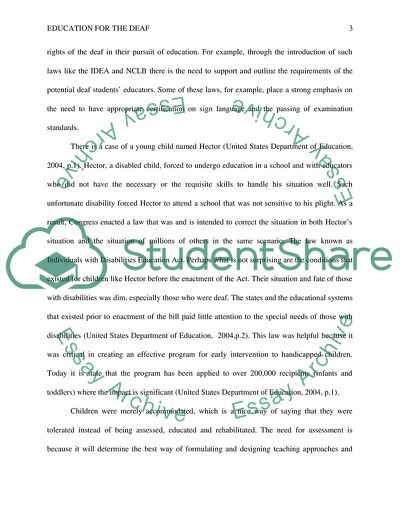Cite this document
(Education for the Deaf Essay Example | Topics and Well Written Essays - 2000 words, n.d.)
Education for the Deaf Essay Example | Topics and Well Written Essays - 2000 words. https://studentshare.org/education/1862883-nclb-ieda
Education for the Deaf Essay Example | Topics and Well Written Essays - 2000 words. https://studentshare.org/education/1862883-nclb-ieda
(Education for the Deaf Essay Example | Topics and Well Written Essays - 2000 Words)
Education for the Deaf Essay Example | Topics and Well Written Essays - 2000 Words. https://studentshare.org/education/1862883-nclb-ieda.
Education for the Deaf Essay Example | Topics and Well Written Essays - 2000 Words. https://studentshare.org/education/1862883-nclb-ieda.
“Education for the Deaf Essay Example | Topics and Well Written Essays - 2000 Words”. https://studentshare.org/education/1862883-nclb-ieda.


